Moderate overlap front: original test
Rating applies to 2001-09 models
Tested vehicle: 2002 Volvo S60 4-door
The Volvo S60 was introduced in the 2001 model year.
| Evaluation criteria | Rating |
|---|---|
| Overall evaluation | |
| Structure and safety cage | |
| Driver injury measures | |
| Head/neck | |
| Chest | |
| Leg/foot, left | |
| Leg/foot, right | |
| Driver restraints and dummy kinematics | |
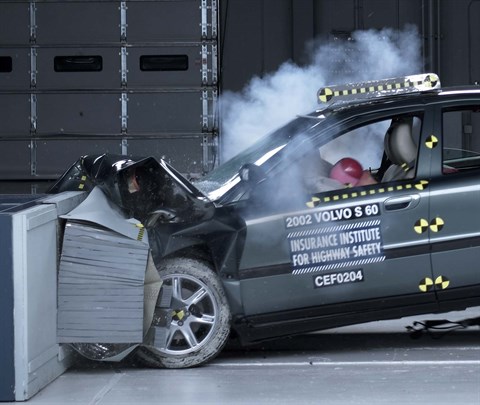
Action shot taken during the frontal offset crash test.
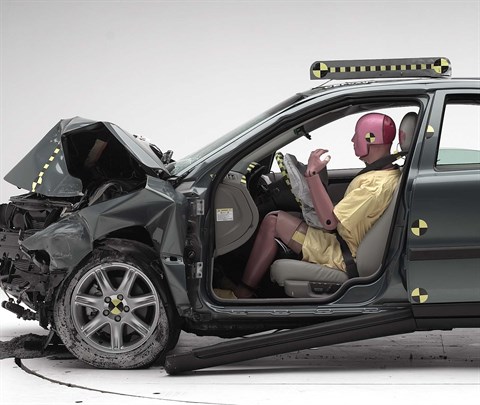
The dummy's position in relation to the steering wheel and instrument panel after the crash test indicates that the driver's survival space was maintained well.
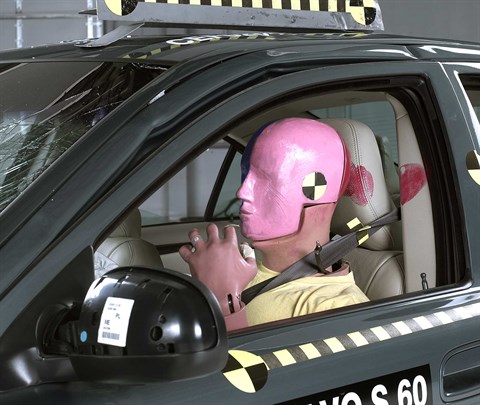
Smeared greasepaint indicates where the dummy's head hit the B-pillar and head restraint during rebound. Head accelerations from these hits were low.
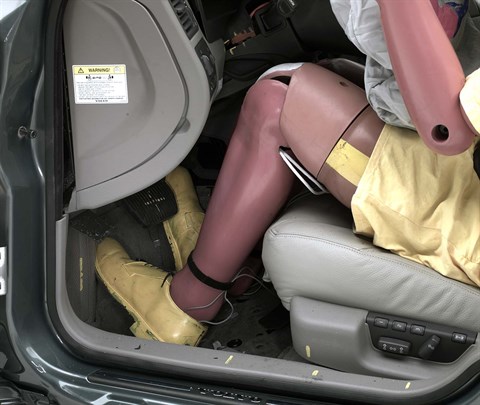
Forces on both lower legs and the right foot were high enough to indicate the possibility of injuries.
Side: original test
Rating applies to 2005-09 models
Tested vehicle: 2005 Volvo S60 2.5T 4-door with standard front and rear head curtain airbags and standard front seat-mounted torso airbags
The Volvo S60 was introduced in the 2001 model year. Beginning with 2005 models, changes were made to the front seats and to the front-seat mounted torso airbags to improve occupant protection in side impact crashes.
| Evaluation criteria | Rating |
|---|---|
| Overall evaluation | |
| Structure and safety cage | |
| Driver injury measures | |
| Head/neck | |
| Torso | |
| Pelvis/leg | |
| Driver head protection | |
| Rear passenger injury measures | |
| Head/neck | |
| Torso | |
| Pelvis/leg | |
| Rear passenger head protection | |
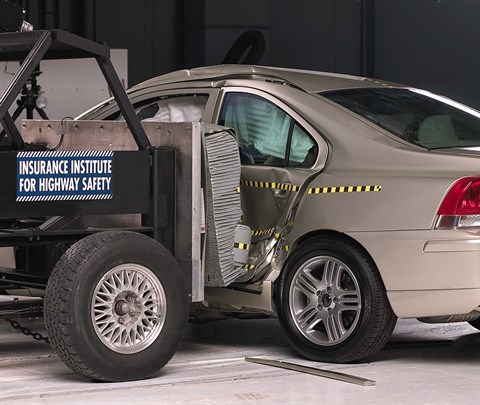
View of the vehicle and barrier just after the crash test.
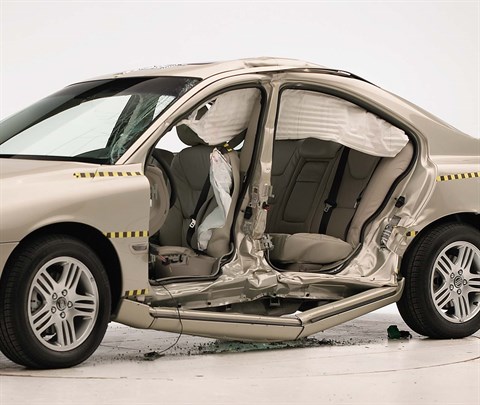
View of the vehicle after the crash with doors removed, showing the side airbags and damage to the occupant compartment.
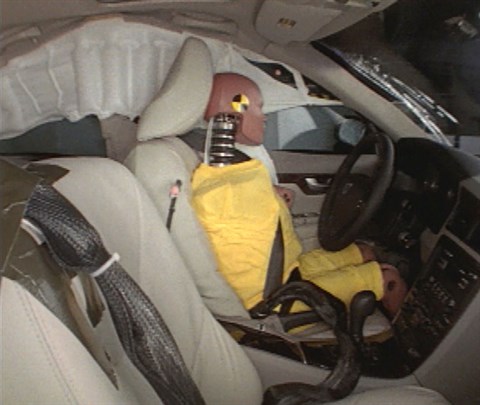
Action shot taken during the side impact crash test showing the driver dummy's head was protected from being hit by hard structures by the side curtain airbag.
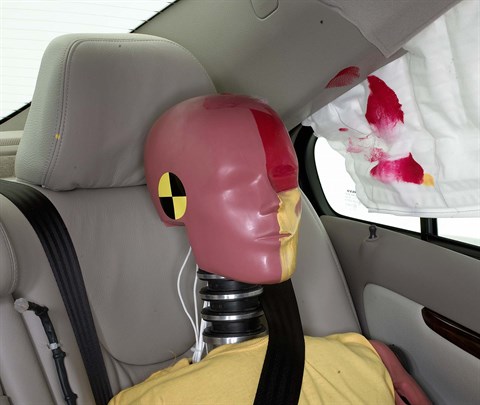
Smeared greasepaint shows where the rear passenger dummy's head was protected by the side airbag.
Head restraints & seats
Seat type: All seats
| Overall evaluation | |
|---|---|
| Dynamic rating | |
| Seat/head restraint geometry |
About the head restraint & seat test
Currently, IIHS tests apply only to front seats.
